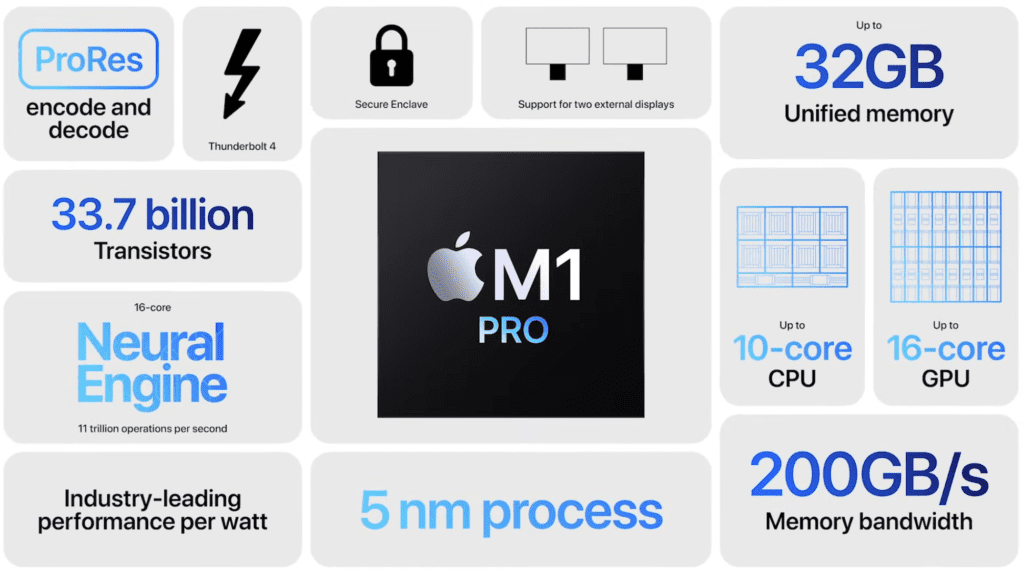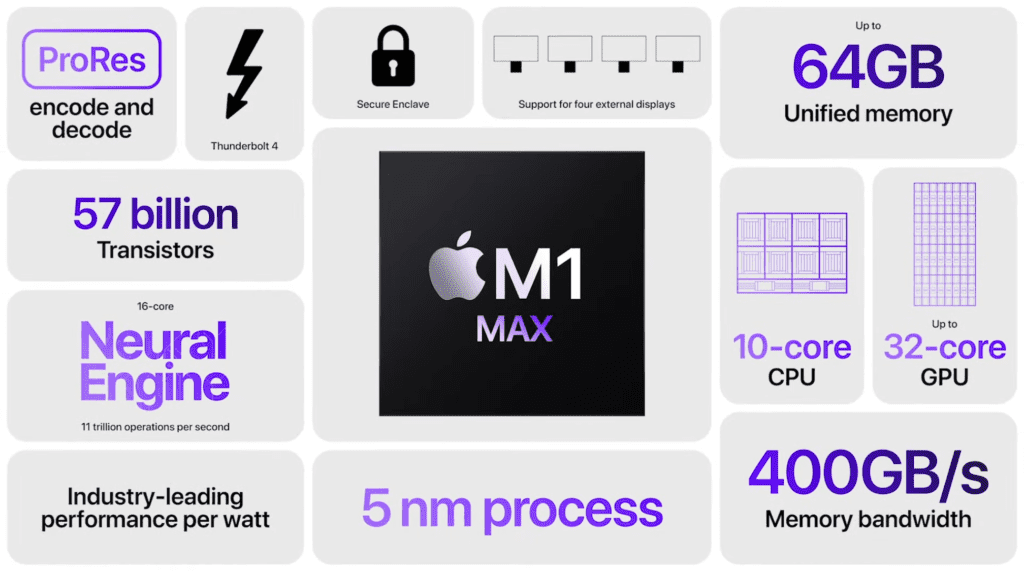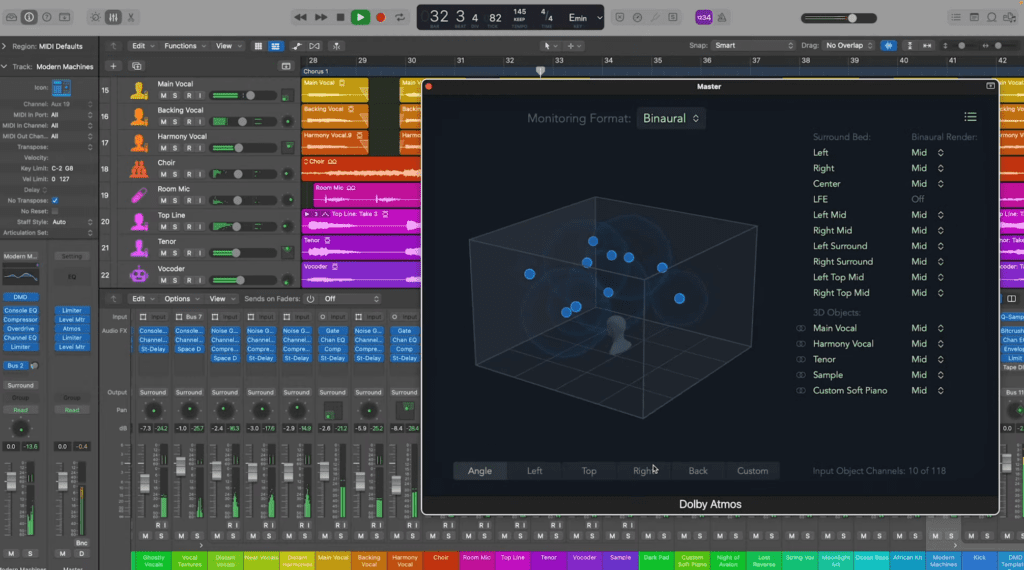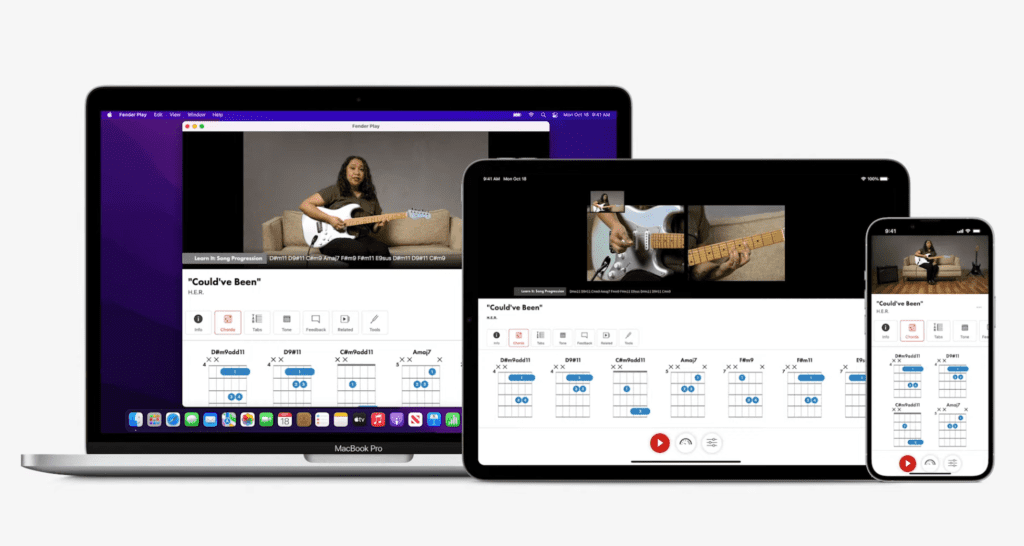Last Updated on
Apple’s Unleashed event confirmed many rumours, but the thing that surprised everyone was the confirmation of both M1 Pro and M1 Max, with the M1 Pro bringing a whole new spec to the ARM chip. There are two more CPU cores and double the GPU cores over the original M1 chips found in the Mac Mini and MacBook Pro.
The major difference between M1 and M1 Pro is that it can now support two external displays and has double the available RAM that was originally allowed on last year’s models.

The M1 Max, however, doubles both RAM, supported external displays and raises the GPU cores to 32, pretty much confirming that this is going to utterly destroy video editing on a much smaller form factor than traditional x86 PCs.

Apple was keen to point out that the complete iOS library is being available across all platforms now, as well as a Logic Pro being able to mix entire spatial audio mixes ‘on a notebook’. Final Cut is also seeing a performance boost with things like tracking, which is notably incredibly tough on workstation PCs.
These chips look to be the real deal, but we won’t know until Apple begin shipping the product to reviewers, as their graphs are something to be desired when speaking about actual data. However, from the last year of being around the M1 Macs, I can tell you that they’re no slouch already, so if these are going to provide more of that, then it’s very exciting.
The M1 Max and M1 Pro will be configurable in the MacBook 14 and 16 inches.






